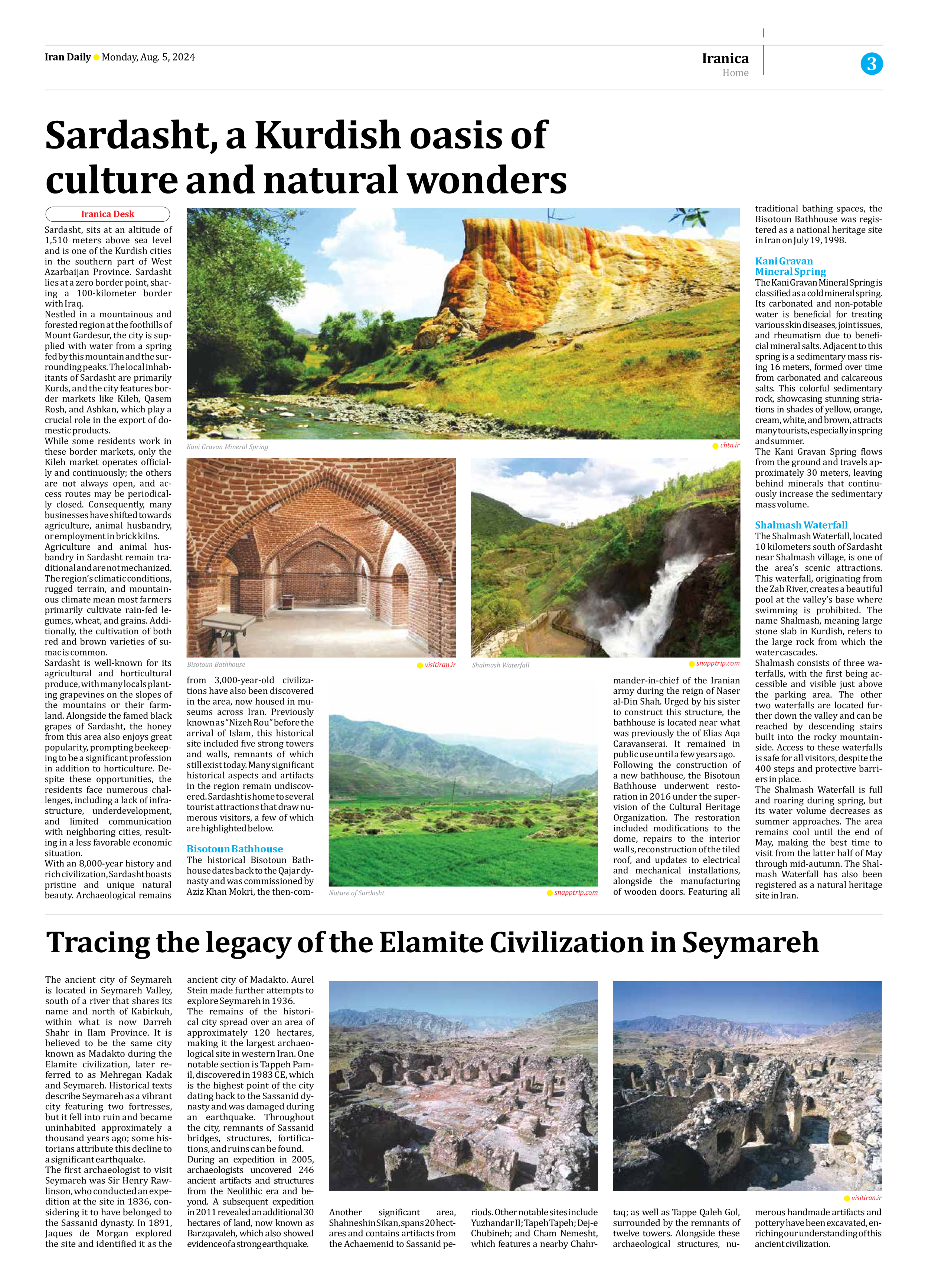
Copy in clipboard...
Tracing the legacy of the Elamite Civilization in Seymareh
The first archaeologist to visit Seymareh was Sir Henry Rawlinson, who conducted an expedition at the site in 1836, considering it to have belonged to the Sassanid dynasty. In 1891, Jaques de Morgan explored the site and identified it as the ancient city of Madakto. Aurel Stein made further attempts to explore Seymareh in 1936.
The remains of the historical city spread over an area of approximately 120 hectares, making it the largest archaeological site in western Iran. One notable section is Tappeh Pamil, discovered in 1983 CE, which is the highest point of the city dating back to the Sassanid dynasty and was damaged during an earthquake. Throughout the city, remnants of Sassanid bridges, structures, fortifications, and ruins can be found.
During an expedition in 2005, archaeologists uncovered 246 ancient artifacts and structures from the Neolithic era and beyond. A subsequent expedition in 2011 revealed an additional 30 hectares of land, now known as Barzqavaleh, which also showed evidence of a strong earthquake.
Another significant area, Shahneshin Sikan, spans 20 hectares and contains artifacts from the Achaemenid to Sassanid periods. Other notable sites include Yuzhandar II; Tapeh Tapeh; Dej-e Chubineh; and Cham Nemesht, which features a nearby Chahrtaq; as well as Tappe Qaleh Gol, surrounded by the remnants of twelve towers. Alongside these archaeological structures, numerous handmade artifacts and pottery have been excavated, enriching our understanding of this ancient civilization.







